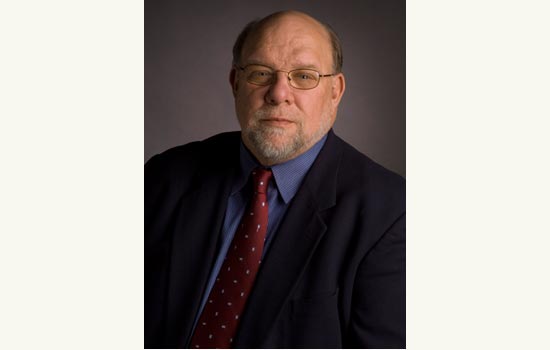Youth-Police Unity Project Promotes Understanding Among Teens and Cops
Partnership of Teen Empowerment, RIT and City Police serves as national model
John Klofas
A multi-year research-and-education partnership, featuring local government agencies, non-profit organizations and academic institutions, seeks to increase understanding and promote greater collaboration between teens and public-safety officers in the Rochester region.
The Youth-Police Unity Project, sponsored by Teen Empowerment, Rochester Institute of Technology and the Rochester Police Department, has developed a citywide survey, focus groups and an ongoing teen/police panel to address organizational and service issues related to public safety operations in the city. The initiative has also worked to educate teens on the role of law enforcement and how they can reduce crime in their neighborhoods.
The project has been cited as a national model for youth/police programming and was recently named a 2010 Bright Idea by the Ash Center for Democratic Governance and Innovation at Harvard University.
“The key to our success has been our careful attention to building relationships, which have led to honest dialogue and allowed us to establish a process jointly owned by police, youth and community organizations,” notes Doug Ackley, director of Teen Empowerment-Rochester. “The process has brought our community together in a new way that will allow us to address the root causes of the tensions between youth and police.”
“We saw three Rochester officers wounded in tragic shootings this year, both incidents involving young people,” says John Klofas, director of RIT’s Center for Public Safety Initiatives, which helped develop and administer the project. “On surveys and in focus groups, youth and officers report troubling rates of mistrust and disconnection from one another.
“Programs like the Youth-Police Unity Project build social capital and community, ultimately helping to increase the effectiveness of public safety operations and reducing the incidence of violent crime,” he continues.
The initiative began in 2005 and to date has surveyed nearly 2,000 Rochester youth and over 260 public safety officers regarding their attitudes and actions toward one another. A core group of youth and officers has also met regularly to review survey results, hold dozens of focus groups with hundreds of youth and more than 50 police and create an action plan to improve public safety and youth-police relations.
The project also sponsored a police-youth symposium in 2010, Real Talk, Real Walk, Real Change: Transitioning Youth and Police to a New Beginning, designed to initiate open, honest and direct communication about the actions necessary by police and youth, along with commitments from the city, community and public safety agencies to improve law enforcement in Rochester.
“Effective law enforcement operations must include opportunities for more positive, neutral and dignified encounters between youth and police,” Klofas adds. “It is our hope this project will serve as a model for a more open and honest dialogue in communities and reduce the vicious and devastating cycle of violence we face in many aspects of American society.”
The Youth-Police Unity Project has been made possible with the support of the Andrus Family Fund and the Rochester Area Community Foundation.






